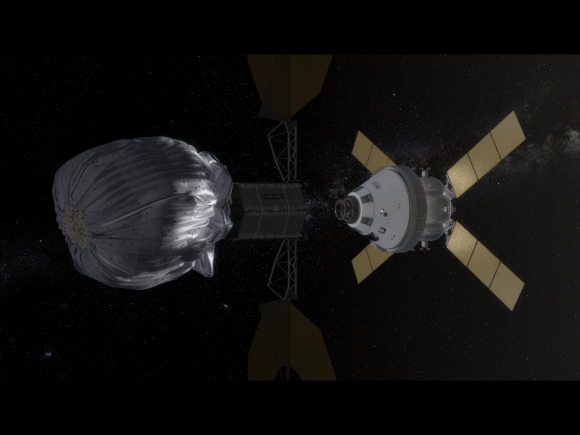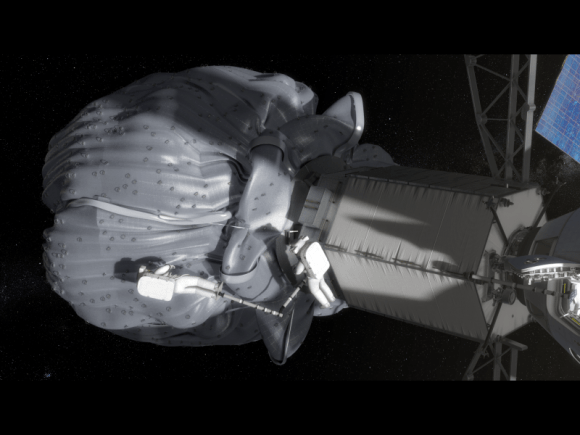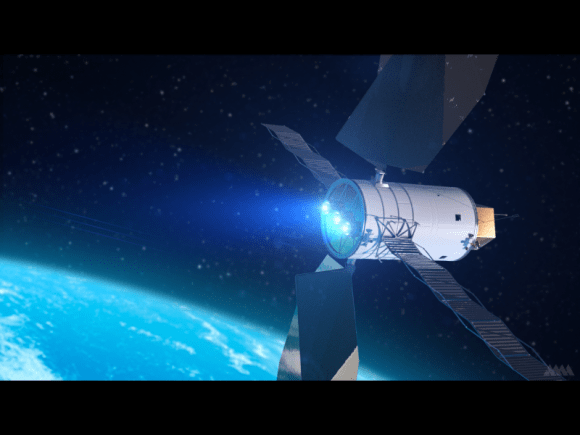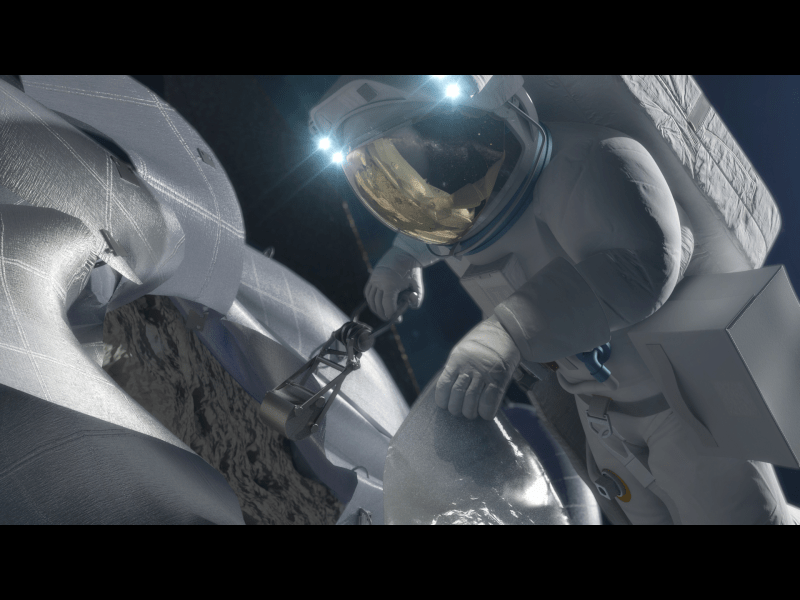NASA has released some new photos and video animations outlining the concept of how their planned asteroid capture mission will work. The plan is to find, capture, redirect a near-Earth asteroid to a stable point near the Moon in order to explore and study it. As we’ve said previously, it’s still unclear if NASA will receive Congressional funding or authorization to do an asteroid retrieval mission, but the agency is moving ahead with its planning work for now.
NASA recently did a mission formulation review to look at some internal studies on the mission, as well as taking a look at over 400 ideas the space community submitted concerning the mission.
The new images show crew operations including the Orion spacecraft’s trip to and rendezvous with the relocated asteroid, as well as astronauts maneuvering through a spacewalk to collect samples from the asteroid.
You can watch the video and see more images below.



NASA is also looking at new technologies like a Solar Electric Propulsion System is an essential part of future missions into deep space with larger payloads. The use of advanced SEP offers more mission flexibility, NASA said.
If you’d like to get involved or add your input, NASA will host a technical workshop at the Lunar and Planetary Institute in Houston from Sept. 30 to Oct. 2 to discuss potential ideas. Virtual participation will be available to the public, and when the details of how to participate become available, Universe Today will post an update.


What are the odds this thing will maneuver like a water filled balloon
with a rock inside. Not to mention when you try to pop the balloon for
specimen retrieval. The regolith might be dry powder … doesn’t meant it
doesn’t “slosh” around in microgravity inside a losely wrapped packing.
There is a previous video showing the giant bag closing tightly around the asteroid. If the asteroid turns out to be a dusty ‘rubble pile,’ it wouldn’t ‘slosh around and would stay intact.
The funny thing is that it almost looks exactly like the space craft and missions I built with the Kerbal Space Program.
In my opinion this is not worth the cost to send a manned space craft. A robotic explorer like the one that captured it would do it better and way cheaper. It is not worth a human explored because the asteroid is tiny, it is already captured and not mind blowing for the public. You don’t even see the asteroid, just a white plastic bag.
Landing on the moon is more mind blowing for the public.
It isn’t about unique worth, but about extending the envelope of the Orion/SLS combo.
As for manned exploration vs robotic, as I have referenced many times over here (so google it), when you do the estimates manned missions are cheaper with higher ROI provided you can stomach the increased I (Investment).
As a test bed to test the Orion it is good.
But this asteroid is so tiny that they probably can cut the asteroid in 10 parts and let it land on earth in 10 cargo capsules for the cost of one Orion launch.
And it is already captured and safe. It would be more cool if the astronauts themselves would put the plastic over it and that it is done live.
When the astronauts landed at the moon then we had endless hours of watching the astronauts bunny-hup for amusement. Kids could be inspired by pretending that they are in 1/6th gravity. But this asteroid retrieval is as exciting as a cargo ship that docks to the ISS and an astronaut gets outside to replace a faulty unit. You only see part of the asteroid for maybe an hour when they peeled the plastic layer.
The only most exiting part of this mission is probably the gravity by the moon assists when humans are close to the moon again.
I hear SLS and especially Orion are slowly “dying in committee” or rather Congress.
NASA doesn’t get the needed money, so predictably they have started to push the non-essential but still deadlines into the future. In a year or two we may be back to the Constellation “it will never finish” political pork plan.
Probably so. But I think that other efforts like Dragon, Bigelow inflatables and Falcon-9 Heavy will provide possibilities were NASA willing to simply fund a mission as opposed to funding far more expensive vehicle development programs that are really congressional district jobs for re-election votes programs.
WTF. If you can capture an asteroid and put it into orbit around the moon, why don’t you spend a few extra pounds of fuel and put it into LEO?
The distant retrograde orbit is very stable and lasts a very very long time, and needs very little maintenance. Placing in LEO will be subject to atmospheric drag, and would need periodic orbital raising, or constant boosts raising cost. Failure to do so would have the asteroid fall to Earth. In a political and safety perspective, an asteroid in LEO is a big no-no. It would also betray NASA’s mandate to send humans beyond LEO, something it hasn’t practiced in decades.
But they have not stated *why* they want to take a small sample from an asteroid. What do they expect to find when they analyze it? Is it really worth the cost? Tons on money in exchange for a bag filled with rocks??? (I suppose the rocks to be not much different from rocks found on the Moon since asteroids crash on it.)
This video from NASA will explain why. http://www.nasa.gov/externalflash/human_space/